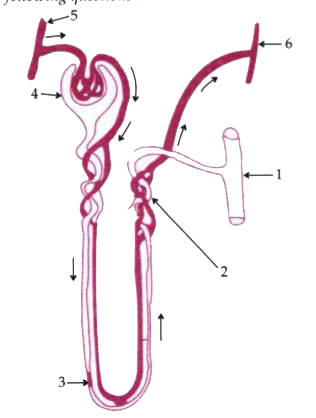The positive hydrostatic pressure is called
Turgor pressure
Wall pressure
Gravity potential
Osmotic pressure
The correct Answer is:A
Step-by-Step Solution:
1. Understanding Hydrostatic Pressure: Hydrostatic pressure refers to the pressure exerted by a fluid at equilibrium due to the force of gravity. In the context of plants, this pressure is often related to the water within plant cells.
2. Identifying Positive Hydrostatic Pressure: The term "positive hydrostatic pressure" is used to describe the pressure that pushes against the cell wall. In plant cells, this pressure is crucial for maintaining structure and rigidity.
3. Defining Turgor Pressure: The specific term for positive hydrostatic pressure in plant cells is "turgor pressure." Turgor pressure is the pressure exerted by the fluid (usually water) inside the cell against the cell wall.
4. Mechanism of Turgor Pressure: Turgor pressure is generated when water enters the cell through osmosis. The water moves through the selectively permeable plasma membrane, causing the cell to swell and exert pressure against the cell wall.
5. Conclusion: Therefore, the positive hydrostatic pressure in plant cells is known as turgor pressure.
Final Answer: The positive hydrostatic pressure is called turgor pressure.
---
Topper's Solved these Questions
- TRANSPORT IN PLANTS BOOK - VMC MODULES ENGLISHCHAPTER - TRANSPORT IN PLANTS EXERCISE - IN-CHAPTER EXERCISE-B
10 Videos
- TRANSPORT IN PLANTS BOOK - VMC MODULES ENGLISHCHAPTER - TRANSPORT IN PLANTS EXERCISE - IN-CHAPTER EXERCISE-C
10 Videos
- TRANSPORT IN PLANTS BOOK - VMC MODULES ENGLISHCHAPTER - TRANSPORT IN PLANTS EXERCISE - PRACTICE EXERCISE-(5)
5 Videos
- THE LIVING WORLD BOOK - VMC MODULES ENGLISHCHAPTER - THE LIVING WORLD EXERCISE - CHAPTER EXERCISE-D
9 Videos
Similar Questions
Which ones are true and false ? (a)Positive hydrostatic pressure is called turgor pressure (b) Wall pressure exerts to prevent the increase of protoplasm size(c) Diffusion is more rapid in liquid than in gases (d) Diffusion of water through a semipermeable membrane is called imbibition (e) Osmosis is movement of substances which takes place along a diffusion gradient
View SolutionAssertion : Loss of water produces a negative hydrostatic pressure.
Reason : Positive hydrostatic pressure is developed due to osmotic entry of water into it.
View Solution
Knowledge Check
Which of the following is true/false regarding transport of substances in plants ?
(i) Mass flow is the movement of substances in bulk as a result of pressure difference
(ii) Bulk flow is achieved only through a positive hydrostatic pressure gradient
(iii) The apoplast system is the system of interconnected protoplasts
(iv) Most of the water flow in the roots occurs via the apoplast since the cortical cells are loosely packed, and offer no resistance to water movement.Aa) (i) and (iv) are true , (ii) and (iii) are falseBb) (i) and (ii) are true , (iii) and (iv) are falseCc) (ii) and (iii) are true , (i) and (iv) are falseDd) (i), (ii) and (iv) are true , (iii) is false
Which of the following statements is/are incorrect?
(i) Water and minerals, and food are generally moved by a mass or bulk flow system.
(ii) Bulk flow can be achieved either through a positive hydrostatic pressure gradient or a negative hydrostatic pressure gradient.
(iii) The bulk movement of substances through the conducting tissues of plants is called translocation.
(iv) Xylem translocates organic and inorganic solutes, mainly from roots to the aerial parts of the plants.
(v) Phloem translocates water, mineral salts, some organic nitrogen and hormones, from the leaves to other parts of the plants.
View SolutionA : Root pressure is dynamic and is always a positive hydrostatic pressure .
R : It is universal phenomenon and develops under absorption lag.
View SolutionPositive hydrostatic pressure developing in root xylem due to active solute accumulation is called
View SolutionWhich of the following hydrostatic pressure is negative ?
View SolutionThe given diagram represents a nephron and its blood supply. Study the diagram and answer the question :

State the reason for the high hydrostatic pressure in the glomerulus.
View SolutionAs various ions from the soil are actively transported into the vascular tissues of roots, then water follows (it's potential gradient) and increase the pressure inside the xylem. This positive pressure is called.
View SolutionA thermodynamic process at constant pressure is called___________________ process.
View Solution
